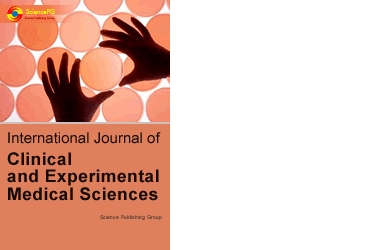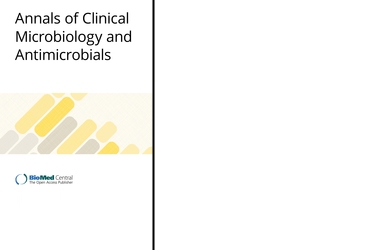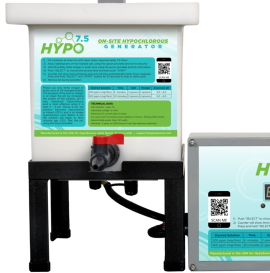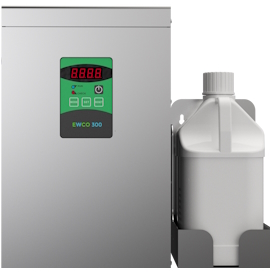Исследование > Микроб > Bacteria > Escherichia coli
Часто используемые названия для растворов хлорноватистой кислоты
- Electrolytically Generated Hypochlorous Acid
- Neutral Electrolyzed Water (NEW)
- Electrolyzed Oxidizing Water (EOW)
- Electro-chemically Activated Water (ECA)
- Super-oxidized water (SOW)
Результаты: 103 опубликованные статьи

Microbe(s): Listeria monocytogenes, Escherichia coli, Vibrio parahaemolyticus

Microbe(s): Escherichia coli ATCC 25922, Pichia pastoris GS115, Aureobasidium pullulans

Microbe(s): Escherichia coli O157:H7, Listeria monocytogenes

Microbe(s): Escherichia coli O157:H7, Salmonella Typhimurium

Microbe(s): Escherichia coli, Salmonella Infantis

Microbe(s): Bacillus subtilis, Escherichia coli O157: H7

Microbe(s): Escherichia coli O104:H4, Listeria monocytogenes, Aeromonas hydrophila, Vibrio parahaemolyticus, Campylobacter jejuni

Microbe(s): Escherichia coli, Porphyromonas gingivalis, Enterococcus faecalis, Streptococcus sanguinis

Microbe(s): Listeria monocytogenes, Escherichia coli O157:H7, and Salmonella sp.

Microbe(s): Staphylococcus aureus, Escherichia coli

Microbe(s): Escherichia coli O104: H4, Listeria monocytogenes, Campylobacter jejuni, Aeromonas hydrophila, Vibrio parahaemolyticus

Microbe(s): Escherichia coli

Microbe(s): Escherichia coli, Salmonella enteritidis, Staphylococcus aureus

Microbe(s): Escherichia coli O157:H7, Listeria monocytogenes, Staphylococcus aureus, and Salmonella Typhimurium

Microbe(s): Escherichia coli O157:H7

Microbe(s): Escherichia coli O157:H7 Salmonella Typhimurium, Listeria monocytogenes

Microbe(s): Total Microbial Count, Escherichia coli O157:H7, Listeria monocytogenes, Pseudomonas spp., Fungi, Yeast

Microbe(s): Escherichia coli O157:H7, Salmonella Typhimurium

Microbe(s): Acinetobacter baumannii, Escherichia coli, Enterococcus faecalis, Klebsiella pneumoniae, Pseudomonas aeruginosa, Staphylococcus aureus, Bacillus subtilis, Myroides spp, MRSA, VRE

Microbe(s): Escherichia coli, Vibrio parahaemolyticus

Microbe(s): Staphylococcus aureus, Bacillus cereus, Escherichia coli, Aspergillus fumigatus

Microbe(s): Escherichia coli

Microbe(s): Acinetobacter baumannii, Escherichia coli, Enterococcus faecalis, Klebsiella pneumoniae, Pseudomonas aeruginosa, Staphylococcus aureus, MRSE, VRE Bacillus subtilis, Myroides spp.

Microbe(s): Vibrio parahaemolyticus, Vibrio vulnificus, Salmonella Enteritidis, Escherichia coli

Microbe(s): Salmonella enteritidis, Escherichia coli O157:H7 and Staphylococcus aureus

Microbe(s): Escherichia coli O157:H7

Microbe(s): Escherichia coli O157:H7

Microbe(s): Escherichia coli, Salmonella

Microbe(s): Escherichia coli O157:H7

Microbe(s): Escherichia coli O157:H7

Microbe(s): Escherichia coli O157:H7, Listeria monocytogenes

Microbe(s): Escherichia coli O157:H7

Microbe(s): Salmonella typhimurium, Listeria monocytogenes, Staphylococcus aureus, Escherichia coli

Microbe(s): Escherichia coli O157:H7, Listeria monocytogenes

Microbe(s): Escherichia coli O157:H7, Salmonella enterica, Listeria monocytogenes

Microbe(s): Escherichia coli O157:H7, Listeria monocytogenes

Microbe(s): Escherichia coli

Microbe(s): Escherichia coli, Listeria innocua

Microbe(s): Escherichia coli O157:H7, Listeria monocytogenes

Microbe(s): Escherichia coli, Listeria innocua

Microbe(s): Escherichia coli O157:H7, Salmonella enteritidis

Microbe(s): Salmonella enterica, Escherichia coli O157:H7, Listeria monocytogenes

Microbe(s): Escherichia coli

Microbe(s): Escherichia coli, Bacillus subtilis

Microbe(s): Escherichia coli O157:H7

Microbe(s): Escherichia coli O157:H7, Listeria monocytogenes

Microbe(s): Escherichia coli, Salmonella

Microbe(s): Escherichia coli, Listeria innocua, Salmonella choleraesuis

Microbe(s): Escherichia coli, Salmonella spp.

Microbe(s): Escherichia coli O157:H7, Listeria monocytogenes, Salmonella Typhimurium, Bacillus cereus

Microbe(s): Escherichia coli O157:H7, Salmonella enteritidis

Microbe(s): Escherichia coli O157:H7, Listeria monocytogenes, Staphylococcus aureus, Salmonella Typhimurium

Microbe(s): Escherichia coli O157: H7, Staphylococcus aureus

Microbe(s): Escherichia coli O157:H7, Listeria monocytogenes

Microbe(s): Escherichia coli, Staphylococcus aureus

Microbe(s): Salmonella Enteritidis, Escherichia coli, Staphylococcus aureus, Listeria monocytogenes, and Bacillus cereus

Microbe(s): Escherichia coli, Staphylococcus aureus, Salmonella spp.

Microbe(s): Salmonella spp., Escherichia coli

Microbe(s): Escherichia coli O157:H7

Microbe(s): Listeria monocytogenes, Escherichia coli O157 : H7

Microbe(s): Escherichia coli K12, Listeria innocua, Pseudomonas putida

Microbe(s): Escherichia coli O157:H7, Staphylococcus aureus

Microbe(s): Escherichia coli O157:H7

Microbe(s): Escherichia coli, Staphylococcus epidermidis

Microbe(s): Escherichia coli O157:H7

Microbe(s): Escherichia coli O157:H7, Salmonella typhimurium, Listeria monocytogenes

Microbe(s): Escherichia coli O157:H7, Salmonella enteritidis

Microbe(s): Escherichia coli, Salmonella typhimurium, Staphylococcus aureus, Listeria monocytogenes, and Enterococcus faecalis

Microbe(s): Escherichia coli O157:H7, Salmonella Typhimurium, Listeria monocytogenes

Microbe(s): Salmonella, Listeria monocytogenes, Escherichia coli O157:H7, Erwinia carotovora

Microbe(s): Escherichia coli O157:H7, Salmonella, and Listeria monocytogenes

Microbe(s): Escherichia coli, Campylobacter, Salmonella

Microbe(s): Escherichia coli O157:H7, Listeria monocytogenes

Microbe(s): Escherichia coli O157:H7, Salmonella spp., Listeria monocytogenes

Microbe(s): Escherichia coli, Listeria monocytogenes, Pseudomonas aeruginosa, Staphylococcus aureus

Microbe(s): Escherichia coli O157:H7

Microbe(s): Escherichia coli

Microbe(s): Escherichia coli, Vibrio parahaemolyticus

Microbe(s): Total Microbial Count, Total Aerobic Bacteria, Coliforms, Escherichia coli

Microbe(s): Escherichia coli O157: H7, Listeria monocytogenes

Microbe(s): Escherichia coli, Listeria monocytogenes, Pseudomonas aeruginosa, Staphylococcus aureus

Microbe(s): Salmonella, Listeria, Campylobacter, Escherichia coli

Microbe(s): Escherichia coli O157:H7, Salmonella

Microbe(s): Listeria monocytogenes, Escherichia coli O157:H7

Microbe(s): Escherichia coli O157:H7, Listeria monocytogenes

Microbe(s): Escherichia coli O157: H7, Listeria monocytogenes

Microbe(s): Salmonella enteritidis, Escherichia coli

Microbe(s): Escherichia coli O157: H7

Microbe(s): Escherichia coli O157: H7, Salmonella Enteritidis, Listeria monocytogenes

Microbe(s): Escherichia coli O157: H7, Salmonella Enteritidis, and Listeria monocytogenes

Microbe(s): Escherichia coli O157:H7, Salmonella enterica, Listeria monocytogenes

Microbe(s): Escherichia coli O157: H7

Microbe(s): Salmonella typhimurium, Staphylococcus aureus, and Listeria monocytogenes, Escherichia coli

Microbe(s): Escherichia coli O157:H7, Listeria monocytogenes

Microbe(s): Escherichia coli O157:H7, Listeria monocytogenes

Microbe(s): Escherichia coli

Microbe(s): Escherichia coli O157: H7

Microbe(s): Escherichia coli, Bacillus subtilis

Microbe(s): Escherichia coli O157:H7, Listeria monocytogenes, Bacillus cereus

Microbe(s): Escherichia coli O157:H7

Microbe(s): Escherichia coli O157:H7, Salmonella enteritidis, Listeria monocytogenes

Microbe(s): Escherichia coli O157:H7, Listeria monocytogenes

Microbe(s): Escherichia coli
Best Hypochlorous Acid (HOCL) Generators
 Portable Hypochlorous Acid (HOCL) Machine
Portable Hypochlorous Acid (HOCL) Machine
Make high quality hypochlorous acid in the home or office.
$159.99 + Free Shipping
 HOCL Machine + Electrostatic Sprayer
HOCL Machine + Electrostatic Sprayer
Make hypochlorous acid and spray with an electrostatic cold fogger.
$309.98 + Free Shipping


